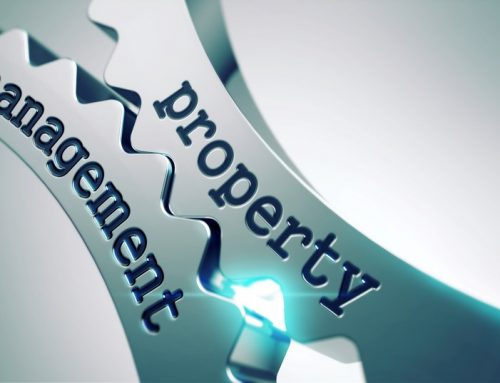In the right to manage vs freehold debate, it’s important to first know the difference between right to manage and purchasing the freehold.
Right To Manage (RTM) allows leaseholders or residents to take control of the management of their residential block. The power of Right To Manage was given as part of the Commonhold and Leasehold Reform Act 2002, and affects leaseholders and their Landlords.
In most cases, where there isn’t an existing RMC, block management is the responsibility of the Landlord. However, with Right To Manage, qualifying residents of residential blocks have the right to take responsibility for the management of the block. This includes insurance, repairs and maintenance of communal areas such as gardens and lifts, amongst many other responsibilities.
Meanwhile purchasing the freehold involves a group of leaseholders buying outright ownership of land or a building and receiving complete control over the building. As Freeholders they can then manage the building how they see fit, including raising or lowering service charges and taking control of a number of different responsibilities.
We cover more about the advantages and disadvantages of both right to manage and freehold ownership below.
Purchasing the Freehold
There are three ways for residents of flats (leaseholders) to purchase their freehold: formally through a statutory process or informally using an informal route involving negotiation with the current owner, who is known as “the landlord”. The third is Right of First refusal where a Freeholder is intending to sell their Freehold interest and must first offer a sale to their Leaseholders.
These rights can be very important because they allow leaseholder communities greater control over how and when repairs should take place.
To qualify for purchase of the freehold, certain conditions must be met. They are:
- At least 2 flats must be held within the freehold
- 25% or less of the freehold building must be being used for purposes which are not residential
- 2/3 of the flats at least must be owned by qualifying leaseholders
- At least half of the flat owners must want to participate in the purchase of the freehold
- Qualifying leaseholders must hold leases that have been granted for 21 years or more
Advantages
Although there is additional responsibility with owning the freehold, in most cases leaseholders find there are significant advantages with doing so. Notable benefits include:
- Residents gain full ownership of not only their flat, but the building in its entirety which means they can take over things like communal areas, maintenance and repair – keeping the building to a much higher, or more affordable, standard.
- Owners of the freehold no longer need to pay ground rent, and instead will need to collect it and service charges from other leaseholders.
- Residents have complete control over the third party contractors or service providers that they choose to maintain, repair or manage the building which can lead to better work and more affordable service charge fees.
- Freeholders no longer need to pay for their lease extension and can extend the lease to 999 years.
- Purchasing the freehold can add significant value to the property. Buyers often find it difficult to secure mortgages on flats if the buildings lease is running down, so a longer lease of up to 999 years, plus a share in the building makes for an attractive and exciting proposition.
- Freeholders can change terms, rules and regulations as they see fit to potentially entice more buyers or make existing residents happier – for example, allowing pets if none have previously been allowed.
Disadvantages
Whilst freehold ownership does have significant benefits, it is important to understand the disadvantages. The main thing to consider is that full responsibility of the building falls to the freeholder, which can be daunting if the individual or group has no experience with building maintenance or management previously. Other drawbacks could present as:
- Initially getting the agreement of fellow residents can be difficult, as can ensuring that they remain involved and committed. This will present as more of a problem in larger buildings where there are more residents than it will in smaller buildings.
- Depending on the types of maintenance the building requires, some years could present freehold owners with expensive ad-hoc or unexpected costs, especially in periods of turbulent weather. To offset this, service charges tend to be more affordable for self-owned blocks and are likely to offset steep costs of repairs, but unexpected financial implications should still be considered and planned for.
- Freeholders should also be aware of their obligations regarding administrative and legal paperwork. Failure to file the right documentation or keep up with finances could incur financial consequences like being struck off as an official shareholder, or fined by law. Furthermore, property insurance must also be decided upon annually from other owners in order for all parties involved to avoid any potential risk on their part.
Cost differences between freehold purchase vs RTM
Another significant difference between Right to Manage and purchasing the freehold is the difference in costs involved.
The cost for exercising Right to Manage is mostly legal fees and administrative costs. However, when purchasing the freehold, freeholders are likely to incur additional costs such as surveyor costs, the premium for buying the freehold itself, and also any legal costs.
In a Right to Manage setup, all leaseholders will also be required to pay the costs associated with forming a Right to Manage company and registering the company with Companies House. Because the RTM company behaves as any other company in the eyes of the law, RTM groups must bear in mind that they will incur annual costs as associated with running a company (like annual tax returns).
Exercising the Right to Manage
An alternative to purchasing the freehold that also offers more control over a building is by enacting the Right to Manage (RTM), a statutory right award which was introduced to residents in the Commonhold & Leasehold Reform Act of 2002.
Right to Manage does not involve buying the freehold of a block. Instead it gives tenants legal capacity to manage the block in which their flat is situated.
Usually, residents will form a Right to Manage Company (also known as Residents’ Management Companies) to assist with the daily management of the building.
The Right to Manage gives residents the opportunity to manage their living environment and does not need the approval or permission of the landlord – but this can be challenged in a tribunal setting.
Right to Manage qualifying criteria
To apply for the Right to Manage, conditions which are similar to those needed when purchasing the building’s freehold must be met. They include:
- The block or building must be a mainly residential block, as Right to Manage does not apply to business or commercial leases. Just like purchasing the freehold, if part of the building is used for purposes other than residential, it can only be 25% or under that is being used. Additionally, the building cannot be a charitable trust.
- The building or block must be self contained. If it forms part of a bigger structure, the building or structure should be able to be developed independently.
- Qualifying residents must hold long leases, which are those granted for 21 years or over.
- Similarly to purchasing the freehold, two thirds of the building must be owned by other qualifying residents (that is those with long leases).
- Identically to purchasing the freehold, 50% of the qualifying residents in the building must be willing to exercise the right to manage.
If you’re considering setting up a company, read more about the Right to Manage Company formation process here.
Advantages
- Right to Manage offers residents full control of all expenses, resulting in more affordable service charges for all residents.
- Through a property management company, Right to Manage also allows residents to choose their own contractors which could result in higher quality work, at a more affordable price than previously.
- RTM companies are completely fair because each leaseholder shares the same voting power as their fellow leaseholders. This means that for events like AGM, decisions are always voted and agreed in a fair manner by the Right to Manage directors.
- Because Right to Manage is a right, there is no compensation due for landlords. Instead expenses will be covered by those who have taken over the management.
RTM can appear to be an ideal solution for residents who may have problems with their landlords, but not every resident may wish to assume this added responsibility. Residents need to carefully weigh their options before exercising their Right to Manage.
Disadvantages
Though complete management can be appealing, residents should remember that the Right to Manage Process does bring some disadvantages.
- RTM company finances can be incredibly limited, and often will only generate its funds through resident service charges.
- Though RTM companies can be formed without a landlord’s permission, when it comes to matters such as building alterations, the landlord’s permission is required as they are still the freeholder. This can lead to a fraught relationship, especially if there is bad feeling between the group and landlord.
- Similarly to resident organisations set up to purchase the freehold, RTM companies can also become vulnerable to internal criticism from leaseholders within the organisation, or from other leaseholders in the block who may not have supported the initial formation of the RTM company.
- Enforcement of paying service charges can become a problem because leaseholders who haven’t paid their fees, or have breached the terms in their contracts, may not respect and obey other neighbours. It’s sometimes difficult for those living on properties with others to take action against them.
- Running a Residents’ Management company can be very time consuming as their success relies on members spending enough of their free time administering and organizing the maintenance for each block. This is relatively straightforward with only two or three flats, but in large blocks it may not be uncommon to find that many residents do not pull their weight.
Read more pros and cons of Right to Manage Companies
Which is better?
On the whole: Neither. Each residents management option can be effective and advantageous in different scenarios depending on the amount of leaseholders, the level of commitment willing to be shown by residents in terms of managing and maintaining a building, and the size and setup of the building itself.
Right to Manage groups can be beneficial options for those who find purchasing the freehold too steep of an investment, whilst purchasing the freehold may work in an environment where a group of residents want to take complete control of a building without a landlord present.
How a Property Management Company can help
Property Management Companies, like ours at Scanlans Property Management, can help both Right to Manage Companies and freehold owners.
When taking over the management of a building many people are surprised at the amount of daily management and maintenance that is required to keep the property running successfully. Additionally, residents may not be experienced in maintenance or administration, or have no wish to become involved and it is in these instances where property management companies can help.
Property management companies can take care of the day to day running of the building, schedule maintenance and repair works, handle administrative tasks and also work closely with residents to solve problems or collect rents and service charges.
Get in touch for help with your property management
Whether you’re a group of residents who have purchased the freehold of your building, or you’re a Residents Management Company who need assistance with any aspect of maintenance, repair or building management: we can help.
With a professional managing agent by your side, you can be confident that you’ve got someone that has seen it all before to take control of the day-to-day, as well as the various health and safety and accounting legislation. Tell us how we can help here.










Leave A Comment
You must be logged in to post a comment.